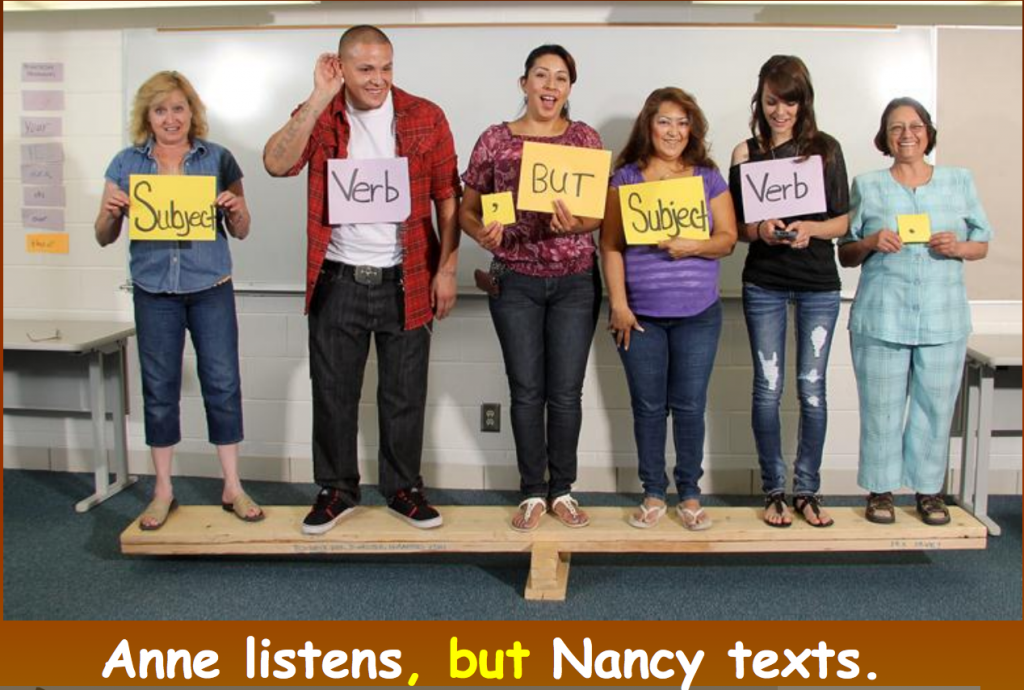Popplet is an interactive app designed for the iPad and web browser and can be used by students to capture and organise ideas. Popplet offers an exciting information and communications technology (ICT) alternative to highlighting functional “chunk of meaning” as explored in previous print-based and kinesthetic activities.
In Popplet, the teacher can write a few sentences from children’s literature loved by the class (e.g. Dr. Seuss Enterprises, 1957) into boxes that differentiate the functional elements Participants, Attributes, Processes, and Circumstances.

Example of functional grammar Popplet task.
Next, the students on iPads or on the interactive white board are tasked to colour in the frames of the boxes (simple click) using the functional grammar colour key and to explain their choices.

Example of functional grammar Popplet completed task.
The original idea of using Popplet as an ICT approach for students to demonstrate understanding of functional grammar was developed by Krystal Laspas (2014). Krystal goes one step further by asking the students to look for “other words” that can replace those of individual boxes in linked black boxes. An alternative extension idea would be to allow students to change the original text, to ask them to make it more personal while remaining key features such as the rhymes.

Example of functional grammar Popplet extension activity.
Popplet is a great format for this extension activity. The words and phrases can be changed with a single click. At the end, the students are required to review any potential functional changes in their sentences. For example, the last part of the sentence has changed from “the winning-est winner” (Participant) “of all“(Circumstances) to “the most famous” (Attribute) “Australian” (Participant).
In reference to Luke (and Freebody’s) Four Resources Model (2000), this extension activity is designed to provide literacy learners with opportunities to progress from ‘code breakers’ and ‘text participants’ (semantic competence) to become ‘text users’ (pragmatic competence) and ‘text analysts’ (coding competence). In terms of the six guiding principles for teaching reading and writing in the twenty-first century (Seely-Flint, Kitson, Lowe, & Shaw, 2014), the extension activity provides authentic opportunities for students to work with multi-modal texts and student-led inquiry by creating their own meaningful adaptations. In conclusion, the students are asked to work with functional grammar to express themselves.
Any Popplet can be shared by creating a link, by inviting collaborators. Popplets can be duplicated for groups of students to allow for simultaneous and individual work and assessment.
References:
- Dr. Seuss Enterprises. (1957). Oh, the places you’ll go! Random House Inc., New York.
- Laspas, K. (2014). Using literature and applications to demonstrate understanding of functional grammar. Website
- Luke, A. (2000). Critical literacy in Australia: A matter of context and standpoint. Journal of adolescent & adult literacy, 43(5), 448-461.
- Seely-Flint, A., Kitson, L. A., Lowe, K., & Shaw, K. (2014). Literacy in Australia: Pedagogies for engagement. John Wiley & Sons.



